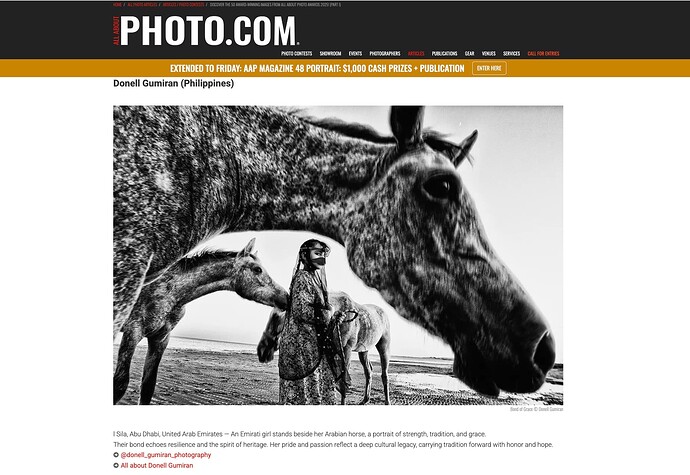First I’ll select my photo, as asked, and it’s the Tbilisi demonstrations, partially because I’ve stood in the same spot where the demonstrations are now happening.
But I would contest the implicit proposal that AI could do no better. True, today’s AI could do no better, because it can’t get out there and photograph real scenes. But we’ve recently had a case where drones are taking photos of people using their phones in cars. We’re not far from having AI photographers getting out there and taking real images (something like this, and not ‘booking a vacation for you’, is the real use case for agentic AI).
But that said, it is arguable that not all 50 could have been taken by AI. The photos break down into roughly two categories: live action, and posed.
The live action photos depend on, as I mentioned, there being a photographer with a camera at the location. Many AI photos will be taken of places too difficult or dangerous for humans. The AI will select the best of these. But in some other cases (especially some of the deeply personal or medical images) I imagine AI won’t take the photo because it won’t be allowed to. We are not ready to let AI that deeply into our lives.
The posed photos could in theory be shot by an AI, but what they require on the part of the photographer is not just the taking of the photo - which could indeed be done by the AI, automatically managing the settings and combining images through HDR or focus shifting - but also in the staging of the scene. This in theory could be done by an AI, but is less likely to.
The posed photo isn’t just a creation, but is actually the result of a relationship being established between the subject and the photographer. Often they are nameless faceless ‘models’ who could be interchanged with anyone (and of course the AI could set this all up) but just as often the photo is the result of a shared vision between the photographer and the subject.
One could use AI to take staged photos of themselves, but it’s really difficult to be the subject of the photo and the viewer of the photo at the same time. The range of the ‘selfie’ format is limited. Through interaction, photographer and subject can iterate their way to a qualify image - it’s not really a collaboration, because each are seeing different things, but it’s not client-server either, because each contributes to the creative act.
I think that this specific activity - the creation of something unique and in many respects (aesthetic, economic, practical) valuable by people with distinct agency and points of view, is something very difficult to do with an AI. Moreover, it would be nearly impossible to replicate the experience of participating in such an interaction. And that is what is being caught by some of these photos.
There aren’t many of these in the set but I’ll nominate the plastic bottle waste photo as the best of them.

